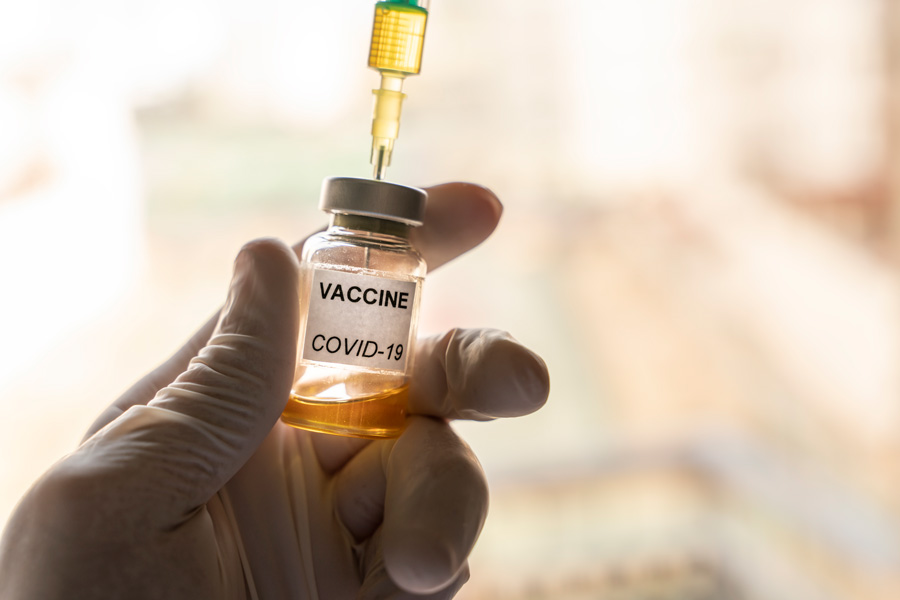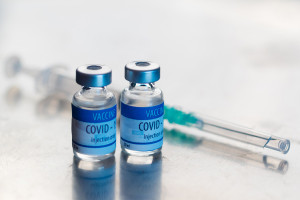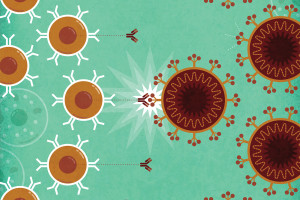This Philly Scientist’s Technology Helped Make the Pfizer COVID-19 Vaccine Possible
Drew Weissman, a professor of infectious diseases at the University of Pennsylvania whose technology the promising vaccine is based on, explains how it works.

The Pfizer vaccine for COVID-19 is thus far showing promising results — which wouldn’t be possible without the work of Philly scientists. Photograph by Javier Zayas Photography/Getty Images
This week, American pharmaceutical corporation Pfizer and German biotechnology company BioNTech released preliminary results from their Phase III clinical trial that showed the companies’ vaccine candidate could be highly effective in preventing COVID-19 infections. According to interim data not yet published in a peer-reviewed journal, the vaccine was 90 percent effective at protecting trial participants who received two injections of the vaccine when compared to participants who received a placebo shot.
The companies still have a ways to go in terms of proving safety and long-term efficacy, but amid an increase in new COVID-19 infections across the country and delays in other COVID-19 vaccine development efforts, the scientific community seems to agree: This is good news.
Like many recent breakthroughs in the life sciences, this good news wouldn’t be possible without the work of researchers and scientists in Philadelphia. Both Pfizer/BioNTech and Moderna are basing their vaccines, in part, on technology created by Drew Weissman, a professor of infectious diseases at the University of Pennsylvania. Weissman is also collaborating with Chulalongkorn University in Thailand to develop a modified mRNA vaccine for COVID-19 to potentially be distributed in Thailand and neighboring countries that may not immediately have access to a COVID-19 vaccine when it becomes available in America.
We spoke to Weissman about how his technology works, his efforts to develop a coronavirus vaccine for underserved nations and his thoughts about the potential impact of Pfizer’s impending COVID-19 vaccine.
NextHealth PHL: Can you tell me about the technology you created and how it’s being used as a part of Pfizer and Moderna’s COVID-19 vaccine development?
Weissman: It’s work that Katalin Kariko and I did where we developed the nucleoside-modified mRNA that’s used in both of those vaccines. We developed it for a lot of different things; mainly to use RNA as a therapeutic protein delivery system. So, if you look at pharmaceuticals right now, protein drugs are the biggest thing around. They keep coming up with new monoclonal antibodies for cancer, autoimmune diseases, cholesterol, migraine — everything imaginable. And other protein drugs are similarly being developed, left and right. Our idea was that it’s really expensive to make protein drugs and it’s a very complicated process and it has safety issues. Our idea was that the modified RNA could deliver any protein at a fraction of the cost, at much lower doses and with much better safety.
Now that you’ve shared your technology, are you still involved in the day-to-day mechanisms of the trials? Are you working on other COVID-19 vaccine efforts?
I’m involved in making COVID-19 vaccines but I’m not involved in any day-to-day with Moderna and I’m minimally involved with Pfizer. But I have a project right now where we’re making the same kind of COVID-19 vaccine for Thailand. I’ve been working with researchers in Thailand for years. But they approached me in February and said they were concerned that if the vaccine was developed in the West, it would take years before they ever saw it. They weren’t willing to wait. And the government was willing to fund their own production centers in Thailand to make vaccines available for Thailand and seven surrounding lower-income countries. So, I’m heavily involved with helping Thailand make their own vaccine program.
So, we saw new results come out from the Pfizer trial showing 90 percent effectiveness. What makes these results so promising?
If you look at just about every other respiratory virus vaccine that’s been developed, at best, they’re 60 percent or 70 percent effective. For influenza, it’s 40 percent to 60 percent effective. So, respiratory virus vaccines, up until now, haven’t given great efficacy. So, to have over 90 percent protection is phenomenal for a respiratory virus vaccine. It’s fantastic because what it means is that less of the population has to be willing to get the vaccine. If the effectiveness was 50 percent, we could probably never reach enough immunity to stop the infection. At 90 percent, we’d probably only have to immunize 60 to 70 percent of the population to get rid of the pandemic. So, that high level of effectiveness solves some problems. The issue is getting people to take it and that’s something that everybody is concentrating on.
That efficacy, as you said, is very good in comparison to other vaccines. But one of the challenges with COVID-19 is not really knowing how long that effectiveness will last. Considering that people can be reinfected with the virus, do we know whether that effectiveness may wear off with time or if the vaccine might be less effective for someone who has contracted COVID for a second time?
The body’s natural antibody response to infection is different than its response to a vaccine. Just because the infection wears off doesn’t mean the vaccine will, but we still have no idea how long the antibodies will last in humans. We’ve never looked before. What we know from animals, and we’ve studied everything from mice and chickens to cats, is that their responses [to the coronavirus] last a long time. We followed animals for over a year and the antibody responses never dropped. It suggests that the antibody response will be durable, but we’re not going to know until we see that over time.
I think the durability is certainly going to be long enough to make a major dent [in new infections]. And even if you have to re-immunize people every year, every two years, or every five years, that’s not such a big deal when it comes to preventing another infection wave.


